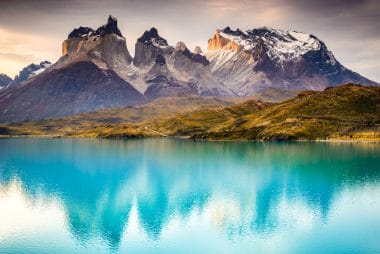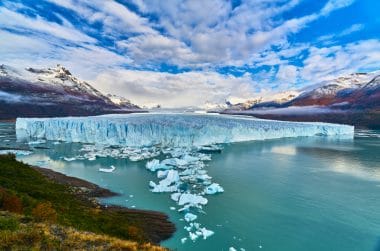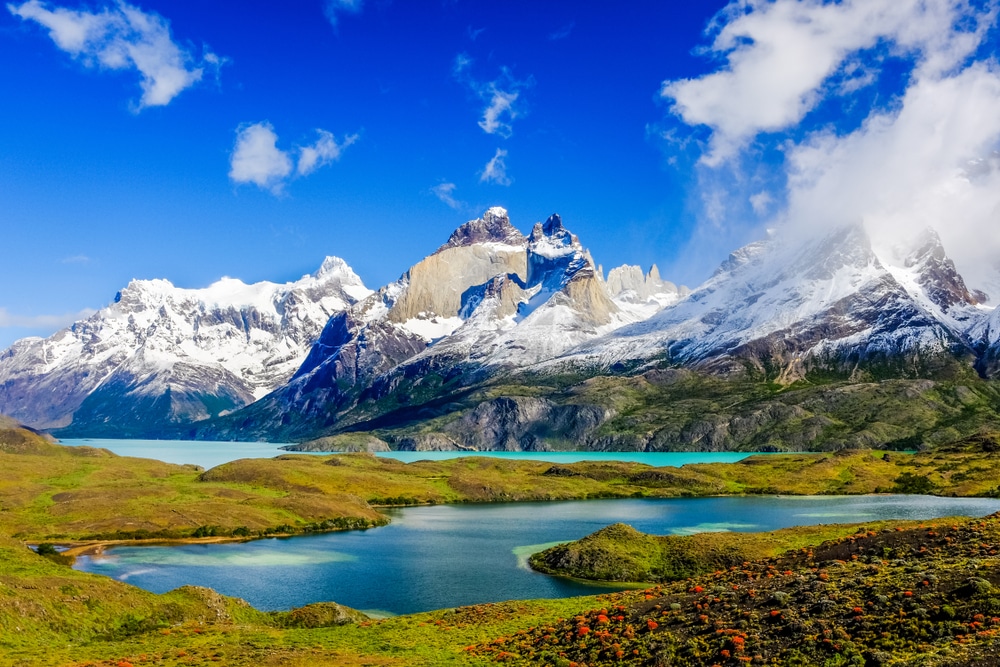Anyone who drives through Patagonia or even just flies over it must sometimes rub their eyes. Is this real or is it a huge backdrop for fantasy and nature films? This rugged landscape at the southern tip of South America is one of the greatest natural wonders on earth and has just as many sights and highlights to offer. This special stretch of land runs through Argentina and Chile with its unique people, vast landscapes, wonderful mountains, impressive coastlines and potential memories that last a lifetime.
What exactly is Patagonia?

When talking about Patagonia, there is no single truth, nor is there a border. Officially, it is the entire area at the southern tip of South America and is occupied in parts by Chile and in other parts by Argentina. One of the special features of the region is that the boundaries are blurred here. In general, humans play only a subordinate role in Patagonia. Here, nature is in charge and offers a multitude of discoveries with its many breathtaking beauties. The people, most of whom have lived here for generations, are humble and grateful for the fertile meadows, but have also embraced the rugged coasts and the icy parts in the deepest south.
Patagonia is typically discovered on a round trip. With guided tours but also by jeep on your own, you will try to discover the many national parks, landscapes, places and wonders that have made this part of the world so famous. For Chile, tourism in the region has now developed into an important economic sector and so, despite all the remoteness, you don’t have to worry about suddenly running into no more people. Many of the famous routes are now well developed for tourism. Nevertheless, people hold back, let visitors explore this stretch of land on their own and are available with their hospitality when the tourists need this help.
The round trip through Patagonia – what do you need to know?

There is a story that in Patagonia there can be all four seasons in one day. This is true both for the fact that you can go from fertile meadows to autumnal, almost stormy coasts to the borders of winter in just one day. But it is also true for the general weather that can be found in this very special region of the world. Nothing is certain, everything can change. People have gotten used to it, but some holidaymakers are surprised by the changeable weather. In addition, you should be aware before the trip that you probably have no idea how big Patagonia really is.
The area of the region is about five times the size of Germany. Journeys of more than twenty hours, due to the nature of the ground over several days, are therefore not uncommon. If you want to explore the region on your own, you should prepare well for the trip: A good car, sufficient supplies and opportunities for communication are an absolute must. As a holidaymaker, you will be rewarded with some of the most beautiful nature parks in the world and with a variety of species and landscapes that are comparable on earth.
The main attractions
In addition to the landscape that you can already see on a trip through Patagonia, it is the nature parks that attract the most holidaymakers. There are countless versions of them in small sizes as well as in sizes that can hardly be described. Here are some of the national parks that are particularly popular with Patagonia vacationers due to their natural wonders:
Torres del Paine National Park: The paradise for hikers and trekkers can be found in the Chilean part of Patagonia and is a popular example of the aforementioned landscape, which could have come straight out of a fantasy film like Lord of the Rings. With its peaks, deep valleys, lakes and rivers, it’s like walking in a sea of postcard motifs. Here, too, it is advisable to rely on the guided tours. The locals not only have the necessary experience to deal with Patagonia’s nature, but also know the most beautiful and best trails for hiking. A special highlight is the tour by canoe, which takes visitors past glaciers and through the rugged rocky ridges that make this part of Patagonia so famous.
Los Glaciares National Park: If you like glaciers, you should also stop by this national park of the same name. The icy landscapes may not exist in this form for much longer and are particularly threatened by the changing climate in the world. Provided they wear the right clothes, holidaymakers can experience a part of the world that has hardly been touched by humans and has had the same charm for centuries.
In general, the history of the region can be seen in the many small towns. The time of colonization still plays a special role here today and the many museums invite you to a change. If you are a guest in Patagonia, you should also devote yourself to good Argentine food. Meat and fresh ingredients play a special role here and ensure that the time in Argentina and Chile is also a complete success in culinary terms.


